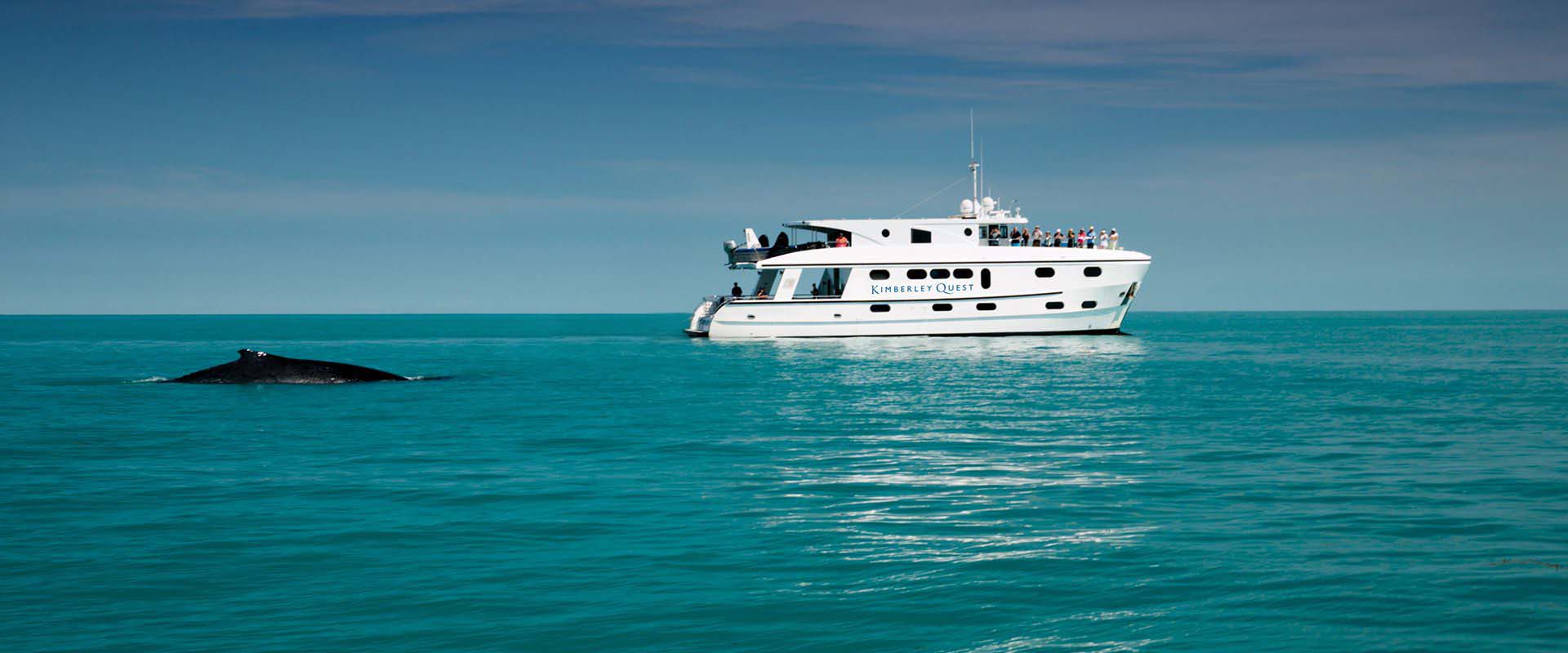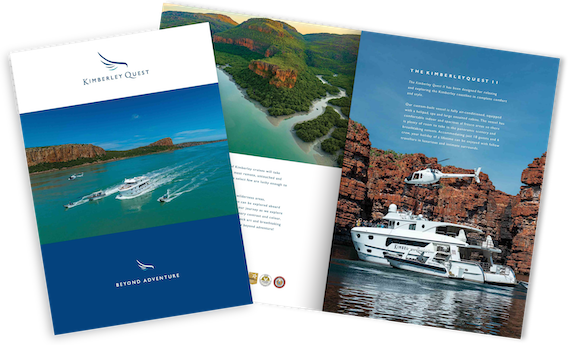Two performances a day of the magical disappearing act
SEA creatures cascade off Montgomery Reef as though Noah’s Ark were emptying out its tanks.
Fish, turtles and black-tipped reef sharks thrash and tumble down its flanks, to be swept away in the roaring mid-ocean channels that drain this emerging coral platform.
Montgomery Reef, 20km off Doubtful Bay on Western Australia’s central Kimberley coast, is perhaps the most astonishing marine spectacle in the country and one of its least celebrated.
Transferring into dinghies from our vessel Kimberley Quest II, we have arrived just as the tide begins to drop rapidly and the reef’s 270sq km expanse surfaces in mid-ocean. It’s like watching a newborn island emerge.
With dramatic tide falls of up to 10m (the largest in the southern hemisphere) along this coast, this unformed Atlantis will soon loom more than 5m above the channel we are in.
We nudge our tinny up a 50m-wide fissure in the eastern side of the reef. The draining water, boiling with whirlpools, rapids and standing waves, surges with the force of a river.
As our outboard motor struggles to make headway against the buffeting current, we see a green turtle stranded on its back high on the reef. To try and land in order to overturn it would be hazardous. Somehow, a combination of the water volume and its own struggles results in the turtle being caught in a flow and flipping right side up into the tumultuous channel, from where it escapes towards the open ocean.
At about 80km in length, Montgomery Reef is Australia’s largest inshore reef and consists at low tide of shallow lagoons, sea-grass beds and occasional islets. Phillip Parker King named it after Andrew Montgomery, the surgeon on his ship HMC Mermaid during their 1820 exploration of the Kimberley coast.
As hundreds of waterfalls sluice off the reef’s crown, we can see its glistening ledges are alive with crabs and octopuses. Equally busy is the sky as wheeling gulls and frigate birds drop in for an easy seafood snack. Egrets wade in the reef pools amid fish and other stranded critters, with the same menu in mind.
Not that we spot them today, but our skipper has seen larger creatures such as mantas, dugongs and dolphins, and even crocodiles, caught up in this twice-daily watery maelstrom.
Montgomery Reef is uninhabited although on its eastern edge are slivers of land that are home to an enduring human mystery. Less than 1km long and 300m wide, these upthrusts, known somewhat ironically as the High Cliffy Islands, were once the terrain of the Yawijibaya Aboriginal people. Said to have lived here for about 7000 years and to have been physically superior and very tall people who travelled the tides on mangrove rafts, they might sound almost mythical.
But in 1929 a Pathe documentary crew filmed these people; soon after, the entire tribe of about 300 disappeared without trace. There is no convincing explanation of their demise, with speculation ranging from credible theories such as a tsunami or war with another tribe to absurdities such as alien abduction.
After hours of fascination we head back towards our ship, leaving the reef jutting high above the sea like a treeless coral continent. In a few hours it will have sunk again beneath the waves.
John Borthwick was a guest of Kimberley Quest Cruises.
Checklist
Kimberley Quest II accommodates 18 passengers; its Kimberley cruises, via Wyndham or Broome, range from six to 14 days. From $6200 a person with all meals and daily excursions. More: kimberleyquest.com.au.
This article was originally published by The Australian. See: https://www.theaustralian.com.au/life/travel/two-performances-a-day-of-the-magical-disappearing-act/news-story/744fa1e401a2e703fb571877313b7c67


